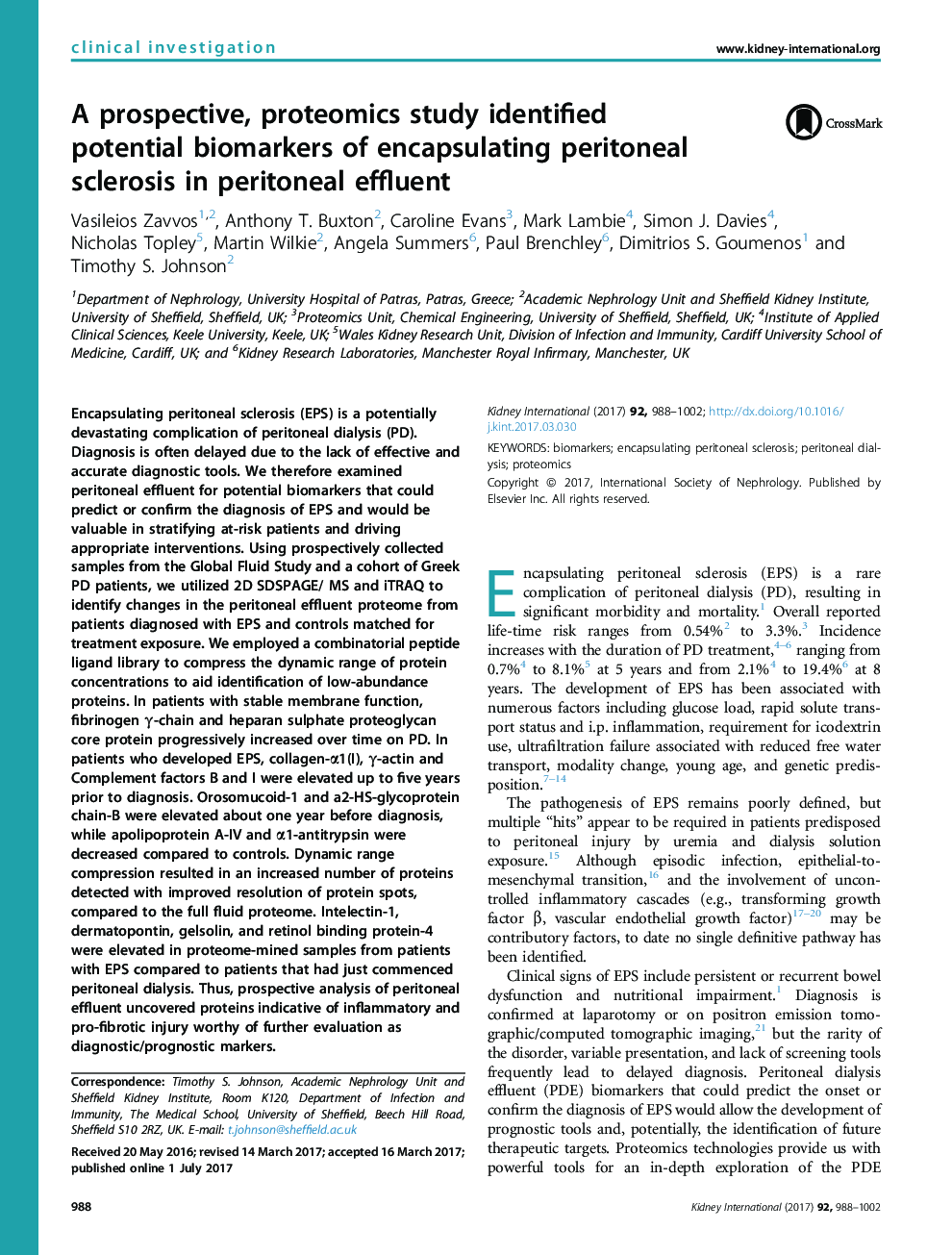| کد مقاله | کد نشریه | سال انتشار | مقاله انگلیسی | نسخه تمام متن |
|---|---|---|---|---|
| 8773218 | 1599146 | 2017 | 15 صفحه PDF | دانلود رایگان |
عنوان انگلیسی مقاله ISI
A prospective, proteomics study identified potential biomarkers of encapsulating peritoneal sclerosis in peritoneal effluent
ترجمه فارسی عنوان
در یک مطالعه آینده نگر، پروتئومیکس، زیست شناسان بالقوه بسته شدن اسکلروز صفاقی در پسابهای صفاقی
دانلود مقاله + سفارش ترجمه
دانلود مقاله ISI انگلیسی
رایگان برای ایرانیان
کلمات کلیدی
بیومارکرها، بسته شدن اسکلروز صفاقی، دیالیز صفاقی، پروتئومیکس
موضوعات مرتبط
علوم پزشکی و سلامت
پزشکی و دندانپزشکی
بیماریهای کلیوی
چکیده انگلیسی
Encapsulating peritoneal sclerosis (EPS) is a potentially devastating complication of peritoneal dialysis (PD). Diagnosis is often delayed due to the lack of effective and accurate diagnostic tools. We therefore examined peritoneal effluent for potential biomarkers that could predict or confirm the diagnosis of EPS and would be valuable in stratifying at-risk patients and driving appropriate interventions. Using prospectively collected samples from the Global Fluid Study and a cohort of Greek PD patients, we utilized 2D SDSPAGE/ MS and iTRAQ to identify changes in the peritoneal effluent proteome from patients diagnosed with EPS and controls matched for treatment exposure. We employed a combinatorial peptide ligand library to compress the dynamic range of protein concentrations to aid identification of low-abundance proteins. In patients with stable membrane function, fibrinogen γ-chain and heparan sulphate proteoglycan core protein progressively increased over time on PD. In patients who developed EPS, collagen-α1(I), γ-actin and Complement factors B and I were elevated up to five years prior to diagnosis. Orosomucoid-1 and a2-HS-glycoprotein chain-B were elevated about one year before diagnosis, while apolipoprotein A-IV and α1-antitrypsin were decreased compared to controls. Dynamic range compression resulted in an increased number of proteins detected with improved resolution of protein spots, compared to the full fluid proteome. Intelectin-1, dermatopontin, gelsolin, and retinol binding protein-4 were elevated in proteome-mined samples from patients with EPS compared to patients that had just commenced peritoneal dialysis. Thus, prospective analysis of peritoneal effluent uncovered proteins indicative of inflammatory and pro-fibrotic injury worthy of further evaluation as diagnostic/prognostic markers.
ناشر
Database: Elsevier - ScienceDirect (ساینس دایرکت)
Journal: Kidney International - Volume 92, Issue 4, October 2017, Pages 988-1002
Journal: Kidney International - Volume 92, Issue 4, October 2017, Pages 988-1002
نویسندگان
Vasileios Zavvos, Anthony T. Buxton, Caroline Evans, Mark Lambie, Simon J. Davies, Nicholas Topley, Martin Wilkie, Angela Summers, Paul Brenchley, Dimitrios S. Goumenos, Timothy S. Johnson,
